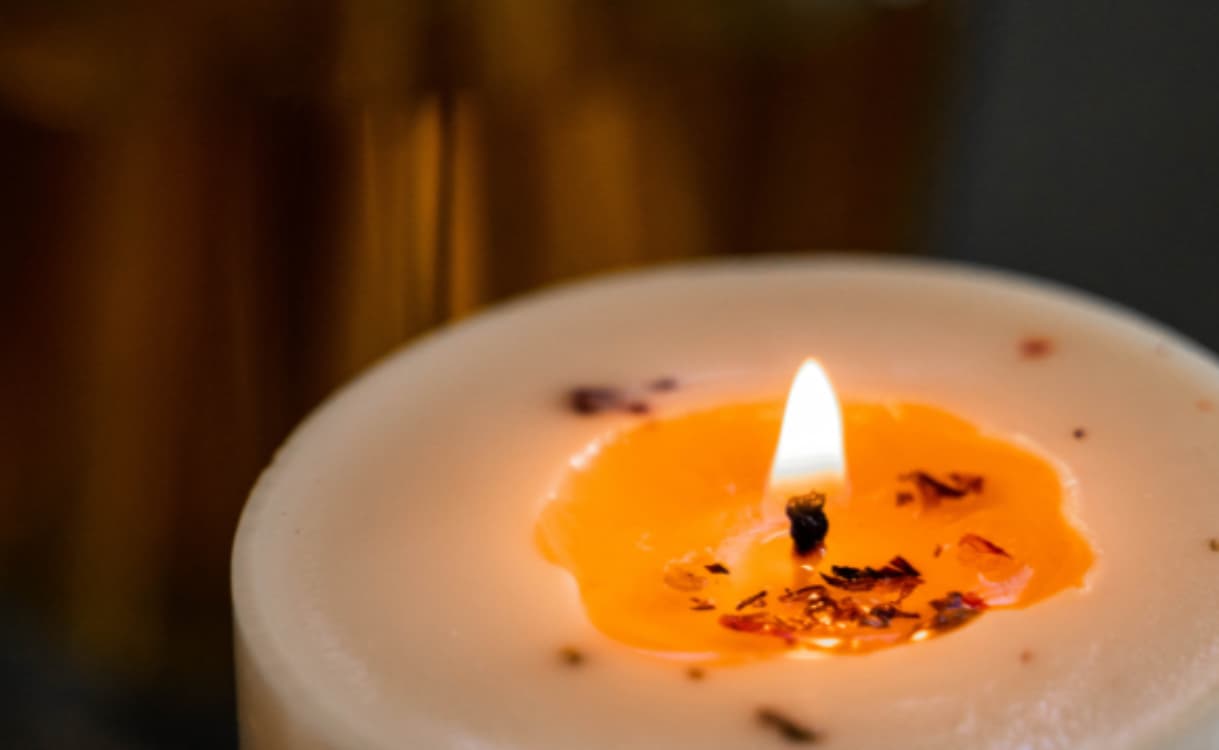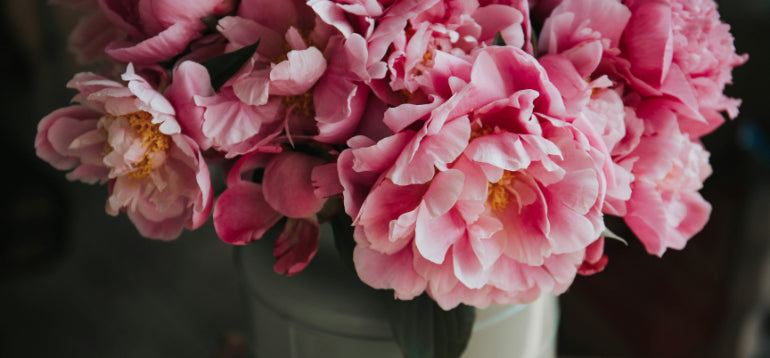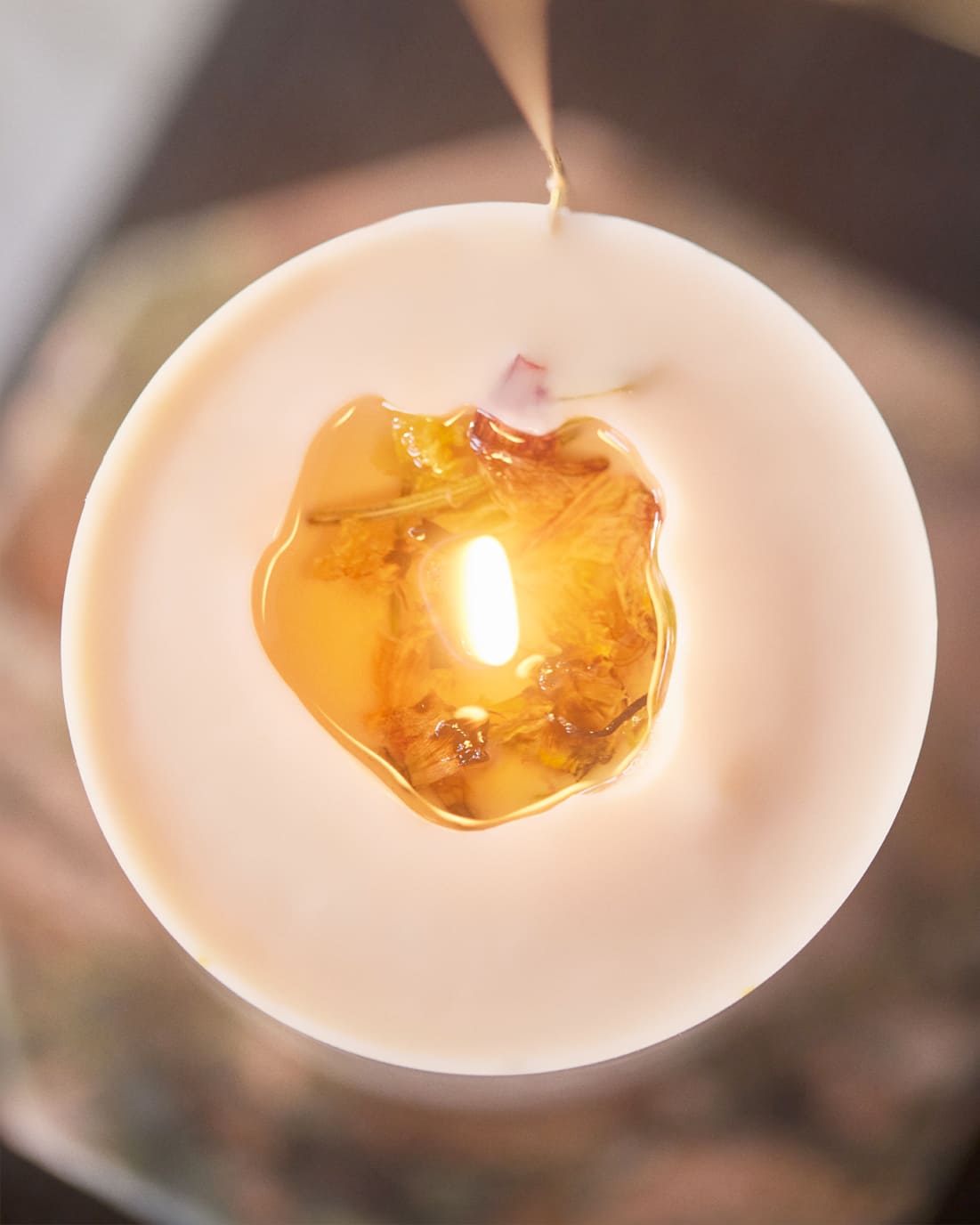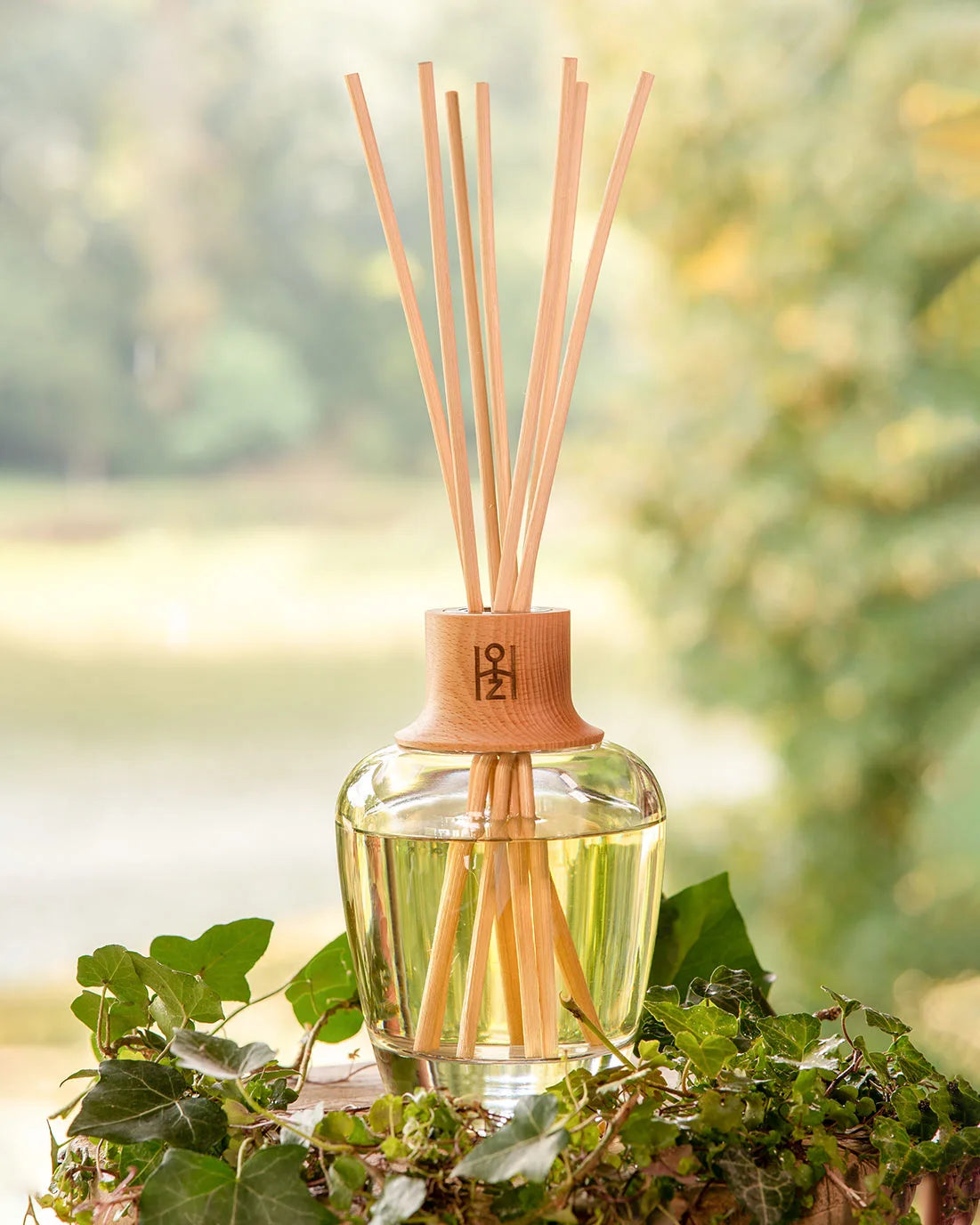Energy rituals for winter
Winter energy rituals are an opportunity to slow down, refocus, and reconnect with the natural cycles around us. Winter is a time of transition that invites reflection, introspection, and renewal. This season of retreat is ideal for self-care and laying the foundation for a balanced and revitalizing new year.
Seasonal energy rituals help align our bodies and minds with our changing environment. These practices include specific rituals like the Winter Solstice Ritual , a symbolic time to welcome the growing light and set intentions for the coming year.
Discover in this article why the seasons influence our energetic well-being and how to integrate a winter energy ritual into your daily life.
The impact of seasons on our energetic well-being
Natural cycles regulate life on Earth by influencing ecosystems and living beings. Winter, the final stage of the seasonal cycle , marks a crucial pause before the renewal of spring. This period, often associated with a decrease in natural light , causes significant physiological and emotional changes.
The role of natural cycles
The movement of the stars, the Earth's orbit around the Sun, and variations in light are at the origin of seasonal changes. These phenomena modify the dynamics of energy flows . On a biological level, the reduction in daylight hours in winter, for example, impacts the production of melatonin and serotonin , two key hormones regulating our sleep and mood. This can lead to a feeling of fatigue and a need for calm.
The winter solstice , which marks the shortest day of the year, is the culmination of this season. It is a moment of energetic shift that symbolizes the rebirth of light . Many traditions associate this day with rituals of well-being and spiritual renewal, including meditation, prayer, or fire ceremonies.
The lunar cycle and its effects
The moon also plays an important energetic role, particularly for women, whose biological cycles are similar to the different lunar phases. In winter, the moon is also more present and sets the rhythm for the lives of living beings. Its waxing and waning light acts as a catalyst for introspection and letting go.
Introspection and vitality
Winter is a season when we may feel more vulnerable to cold, illness, and energy imbalances. But while our metabolism may be affected, it's also a key time to renew our energies and lay the foundation for a new year.
Adopting a winter energy ritual allows us to take advantage of the lunar force, to refocus on ourselves, our strengths, our weaknesses and our expectations for the future. By including practices of purification , harmonization , protection and vitality, we take a path towards well-being throughout the winter.
Winter Energy Rituals: Ancestral Traditions and Approaches
For millennia, civilizations around the world have developed specific energetic rituals to honor winter and maintain balance with nature.
Ayurveda: Vitality and balance in winter
In Ayurveda , winter is a season dominated by the Kapha and Vata doshas. Cold and dampness are considered disruptive elements that require special attention. Ayurvedic practices recommend warm oil massages, infusions of warming spices like ginger and cinnamon , and purification rituals. to strengthen immunity and balance energies .
The winter ritual according to Ayurveda also includes specific practices for the solstice , such as herbal steam baths to soothe Kapha and introspective meditations to calm Vata.
Chinese Medicine: Harmonization of Yin and Yang
Chinese medicine associates winter with the element of Water, a symbol of rest and regeneration. It emphasizes strengthening the kidneys, a source of vitality, through practices such as acupuncture, qigong, and a healthy diet. Nutrient-rich soups such as black bean and seaweed are favored. These rituals nourish the Yin and prepare the body for spring's blossoming.
Animist beliefs and solar celebrations
In animist traditions, winter is often celebrated as a time of connection with the forces of nature and cosmic cycles. The winter solstice , which marks the shortest day of the year, is considered a symbolic turning point, a rebirth of light . Rituals include fire ceremonies and prayers to invite the light back. Smudging with sacred plants such as white sage or palo santo is also used to purify spaces.
Our energy tips for a winter wellness ritual
To integrate a winter energy ritual into your daily life, here are some practices inspired by the traditions mentioned.
Discover energetic fragrances for the home
Take advantage of natural light
Natural light plays a vital role in our well-being , especially during the short winter months. Exposure to daylight , even on cold or overcast days, helps stimulate the production of serotonin , a key neurotransmitter for balancing mood and reducing feelings of winter fatigue or blues. Include a specific time to welcome the sunrise or sunset in your ritual .
Walking outdoors is also a great way to enjoy the benefits of natural light and activate happy hormones. A walk or hike helps oxygenate the body and renews energy . Yoga and meditation practiced outdoors also allow you to connect with your environment and anchor a sense of inner calm, while benefiting from the revitalizing effects of light .
For particularly dark days, light therapy offers a valuable alternative. This method, which relies on exposure to artificial light that mimics sunlight, helps compensate for the lack of natural light and regulate the circadian rhythm. A daily session of 20 to 30 minutes can significantly improve mood and energy .
Finally, don't overlook the importance of vitamin D , nicknamed "the sunshine vitamin." Synthesized by the skin through sun exposure, it plays a crucial role in regulating mood and maintaining a robust immune system. In winter , when daylight is scarcer, it may be helpful to supplement your vitamin D intake with a suitable diet or, if necessary, supplements, always after medical advice.
Create a personal sanctuary
Creating a sanctuary at home means transforming your living space into a haven of peace and positive energy . Energy candles , sprays , and diffusers of energetic plant essences are valuable allies for creating a calming, harmonious, and protective atmosphere. Also incorporate decorative elements inspired by solstice celebrations, such as cedar branches, known for their purifying and protective properties, symbolizing strength and renewal.
By combining their aromatherapeutic and energetic benefits, these accessories act as vectors of serenity and revitalization.
The four ranges offered by HOZHO meet the specific needs of each moment. The purifying range, enriched with sage and Palo Santo, clears the air of stagnant energies . The protective range, based on myrrh, cedar and patchouli, envelops your home in a bubble of security and comfort . The harmonizing range, infused with sandalwood and red rose, promotes emotional balance and invites moments of introspective calm. Finally, the vitalizing range, with its fresh and energizing citrus notes, stimulates creativity and brings a touch of sparkling energy to your days.
These aromatherapy synergies complement the principles of domotherapy, a discipline that explores the impact of spaces on our well-being . Based on the idea that spaces carry an " energetic memory," domotherapy works to purify and rebalance these energies through colors, natural materials, and practices such as the use of energetic fragrances.
Feng shui , a thousand-year-old discipline from Chinese culture, fits perfectly with these approaches. By harmonizing the layout of rooms and promoting optimal circulation of energies , feng shui creates an environment in which each object and each space contributes to your well-being .
Adopt a special winter diet
In winter , our bodies need warm, spicy, and nourishing foods to boost our metabolism, maintain our vitality, and protect ourselves from external aggressions. Add winter herbal teas, such as ginger and turmeric infusions, to your diet to complement your wellness rituals . This season requires specific intakes that meet both energy needs and strengthen the immune system.
Warm, hearty foods, such as root vegetable soups (pumpkin, sweet potato, carrots) or stews, provide comforting warmth and sustained energy . Warming spices, such as ginger, turmeric, cinnamon, and black pepper, stimulate digestion, increase circulation, and help maintain optimal body temperature. These foods are especially beneficial for offsetting the cold and sluggishness of winter.
To strengthen your defenses, focus on foods rich in vitamins, minerals, and antioxidants. Alliums, such as garlic, onion, and chives, have powerful antibacterial and antiviral properties, ideal for preventing infections. Citrus fruits (oranges, lemons, clementines) and cruciferous vegetables (cauliflower, broccoli, Brussels sprouts) are rich in vitamin C , a valuable asset for supporting the immune system.
Protein also plays a key role in winter . Legumes (lentils, chickpeas, beans) provide essential amino acids, while oily fish (salmon, mackerel, sardines) provide omega-3s , known for their anti-inflammatory properties and role in maintaining energy . Organic eggs and mushrooms, especially shiitake and oyster mushrooms, further boost immunity thanks to their zinc and selenium content.
Don't overlook the benefits of aromatic herbs, such as thyme, oregano, and rosemary, which act as natural antibiotics and help prevent winter infections. Finally, for a comforting and preventative effect, incorporate foods such as propolis, which has immunomodulatory properties, or cinnamon, known for its digestive and antimicrobial properties.
Adopting a winter -friendly diet isn't just about keeping warm: it's also a way of taking care of your body holistically, strengthening your defenses and supporting your metabolism during this demanding period.
Practice gentle exercises
In winter , incorporating gentle movements like yoga or qigong is essential for stimulating energy flow and maintaining balance in the body and mind. During the winter solstice , dedicate a yoga session to postures focused on grounding and energy renewal, such as tree pose or mountain pose.
Yoga , with its many styles, offers benefits suited to this season. For example, Hatha Yoga , with its slow, stabilizing postures, gently strengthens the body while cultivating inner serenity. Yin Yoga , with its deep, prolonged stretching, releases accumulated tension, while Restorative Yoga helps regenerate the body and mind during this introspective period.
For those looking to generate a little more warmth, Vinyasa Yoga brings dynamism and vitality, especially on colder days. Qigong , on the other hand, combines flowing movements and conscious breathing to strengthen life energy and support the immune system.
Meditation is also a key practice for centering during the winter months. It allows you to pause, reflect on the past year, and set intentions for the year ahead. Guided meditations or mindfulness exercises help manage emotions and cultivate resilience in the face of the season's challenges.
To complement these practices, incorporating creative or playful activities can bring a dose of joy and well-being . Moments spent painting, cooking, tinkering or writing stimulate the production of happy hormones , as do activities shared as a family, such as board games or art workshops. These moments of creation and sharing strengthen bonds, bring lightness and warmth to winter , and allow us to experience the season with more vitality and balance.
At HOZHO, we aim to transform every moment of your daily life into an enriching sensory and energetic experience. With our energetic scented home care products and our energetic body fragrances , we offer holistic solutions that combine elegance and well-being. Let our artisanal expertise and unique synergies guide you through winter with a perfect balance of vitality and serenity.
Sources:
Chiesa, A., & Serretti, A. (2009). A systematic review of neurobiological and clinical characteristics of mindfulness meditations. Psychological Medicine , 40, 1239 – 1252. https://doi.org/10.1017/S0033291709991747 .
Lynch, J., Prihodová, L., Dunne, P., O'Leary, C., Breen, R., Carroll, Á., Walsh, C., McMahon, G., & White, B. (2018). Mantra meditation program for emergency department staff: a qualitative study. BMJ Open , 8. https://doi.org/10.1136/bmjopen-2017-020685 .










